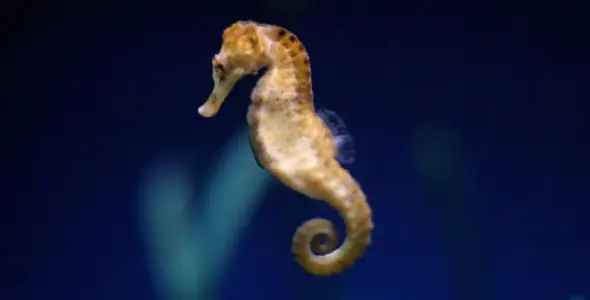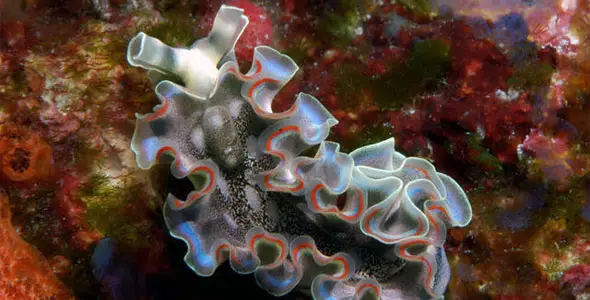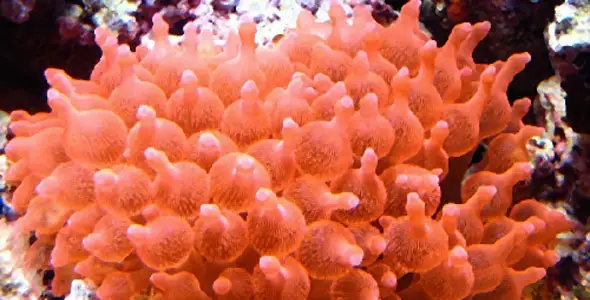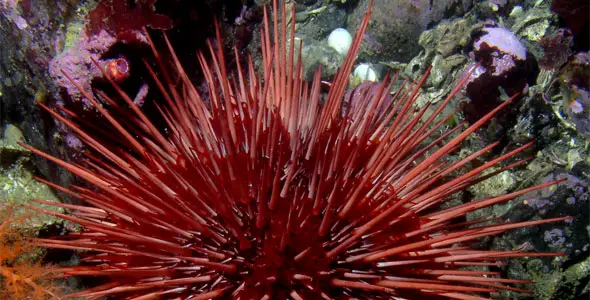Mystical and magical, the Seahorse is a highly sought addition for the marine Aquarium. This delicate creature drifts along the currents of the ocean or latches onto a sea fan as it gently bobs in the wake of the waves. Though far from a mammal, this bony fish is well named with its horse-like features that have captivated aquarists for generations. Seahorses come from the same family of fish as pipefish, sea dragons and pipe horses. They are found in shallow, warm waters throughout the world and prefer to live in sheltered areas, full of grasses or other gentle hiding places. They camouflage themselves during much of the day, but when the time is right and the situation calls for it, their bodies will become brightly colored and attractive.
Mating and reproduction amongst Seahorses is perhaps the most interesting than that of any other fish. Courtship amongst Seahorses can be viewed as almost loving. They will court for several days, changing color and swimming side by side as they hold tails or engage in various dances. Just before mating, they will engage in a “true courtship dance.” This dances lasts about 8 hours and allows the male to pump water through his egg pouch. The egg pouch expands and opens to show that it is empty and ready to receive the female’s eggs. The two will then “kiss,” placing their snouts together as they rise out of the seagrass. The female will insert her ovipositer into the brood pouch of the male and deposit her eggs. The couple will then sink and the female will leave the male to incubate and hatch the eggs. Gestation takes up to four weeks and during this time the female mate will visit every day with the two spending about six minutes engaged in courtship-like activities. Though many people believe that Seahorses mate for life, this is not true. They are monogamous during the breeding season and have a higher level of mate fidelity than most other fish, however they will switch mates when the opportunity presents itself.
Seahorses and Aquariums:
Raising Seahorses in an aquarium is very difficult as those acquired from the wild are very delicate and do not handle the change in environment well. It is recommended that those looking to purchase Seahorses investigate captive-bred Seahorses as they survive better and are less likely to carry disease. In addition, purchasing a captive bred Seahorse does not help to contribute to the depletion of Seahorses in the wild. Ideally, a Seahorse should be kept alone in a tank of at least 25 gallons and in a habitat as close to its natural one as physically possible. Do not keep Seahorses with fish such as eels, tangs, triggerfish, squid or octopus and avoid sea anemones. Visit The Seahorse Project for more information about conserving and keeping seahorses and for additional help in creating the ideal environment for your Seahorses.
Diet:
Seahorses are carnivorous and love to feed on small crustaceans, invertebrates and larval fish. They will enjoy brine shrimp, though it is also highly recommended that frozen mysidacea be purchased and fed regularly.
Size: Between 1 and 15 Inches
Freshwater/ Saltwater: Saltwater
Diet: Carnivore
Reef Compatibility: 8
Tank Mate Compatibility: 0
Lifespan: Up to 10 Years




